Around 400 native youngsters have been concerned on this archaeological challenge in Cardiff, Wales. Vivian Paul Thomas, Author supplied
The information and management of bronze gave some individuals who lived between 2200BC and 700BC monumental wealth and energy. Their lives and deeds have been immortalised by their burial mounds, generally known as barrows and cairns, which nonetheless litter our panorama in the present day. Incredibly although, discovering the locations the place bronze age folks lived has confirmed to be very tough.
In south Wales, for instance, solely a handful of settlements are identified about. Typically, all that stay are the ruins of a flimsy roundhouse or two. We have little else to inform us concerning the lives of the inhabitants. Maybe that’s as a result of bronze age folks had cellular existence, shifting across the panorama with their herds from season to season however by no means staying in the identical place too lengthy. That’s one argument, anyway.
However, in the summertime of 2022, a collaborative, community-led archaeological excavation on the outskirts of Cardiff started to problem these assumptions.
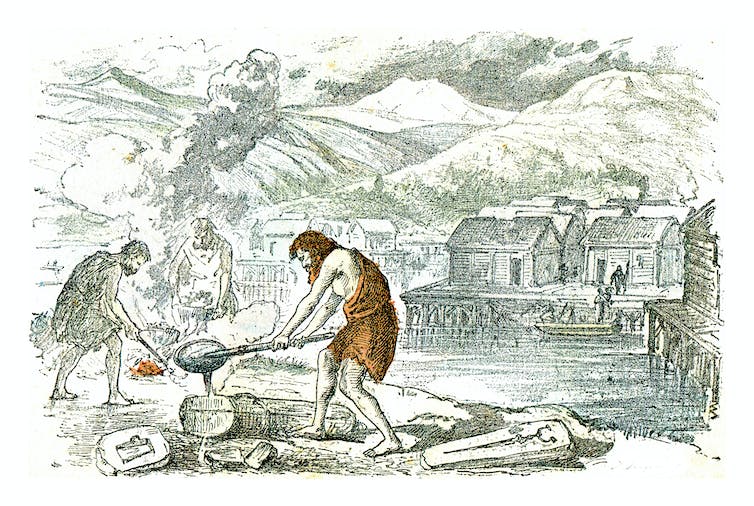
The bronze age is the identify given to the time frame between 2200BC and 700BC.
Morphart Creation
It’s arduous to think about how our prehistoric ancestors would have reacted once they first started to make and use steel. They took rocks that sparkled with inexperienced and silver, crushed and heated them till they grew to become liquid. They then poured this elixir into moulds earlier than cooling and breaking them open to disclose the darkish golden-coloured metallic objects inside. It should have appeared like magic.
Since 2011, our CAER Heritage Project has mobilised folks within the Cardiff suburbs of Caerau and Ely to think about and discover such historical past and archaeology. Both areas face challenges comparable to excessive unemployment and poor instructional attainment. But they’re additionally dwelling to a bunch of extraordinarily pleasant and proficient folks, to not point out some excellent heritage too.
Until lately, a lot of our archaeological investigation had targeted on the Caerau hillfort. This is the most important and most spectacular iron age (700BC) hillfort within the area and is sort of solely surrounded by homes.
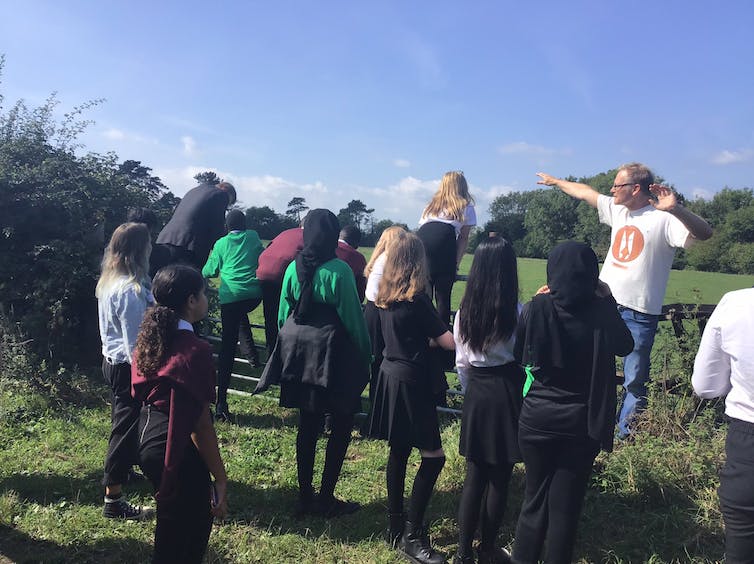
Local schoolchildren collect close to the Caerau hillfort.
Vivian Paul Thomas, Author supplied
We found that the hilltop was used as a gathering place in the course of the stone age (3600BC), earlier than the hillfort was constructed round 600BC.
Over the final couple of years, now we have taken archaeology into the housing estates themselves. During the COVID lockdowns between 2020 and 2021, native residents did “mini-digs” of their gardens. Many found prehistoric objects comparable to flints and pottery shards.
The finest likelihood of discovering the locations the place prehistoric folks lived was in a big space of open floor generally known as Trelai Park, which is round 1,500 metres east of the Caerau hillfort. The park is in the present day used for sport however in its centre are the stays of a Roman villa, which was excavated in 1922 by the famend archaeologist, Sir Mortimer Wheeler.
A century later, in April 2022, we accomplished a “geophysical survey” of the park with native faculty youngsters and adults. Geophysics is a course of utilizing a machine known as a magnetometer, which permits archaeologists to “see” below the bottom with out eradicating the soil and helps us work out the place to dig.
We had anticipated to search out extra Roman stays, however round 200 metres south of the villa, we found an intriguing sq. enclosure.
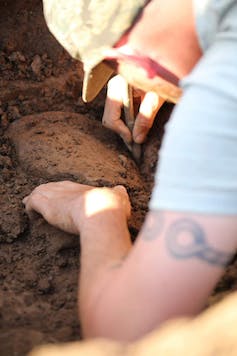
Vivian Paul Thomas, Author supplied
Digging beneath one of many soccer pitches final summer time, we revealed the stays of a considerable roundhouse. It was constituted of timber and thatch which had lengthy since rotted away, however the large publish holes that held up its round wall nonetheless survived.
A radiocarbon date from a chunk of burnt wooden indicated it was constructed round 1500BC, which is the center of the bronze age. That makes it the oldest identified home within the Welsh capital.
Even extra amazingly, the ground floor that its occupants had walked, labored and slept on was nonetheless there. Trampled into this ground have been finds of flint and stone instruments, pottery and burnt bones which gave us a glimpse into bronze age every day life.
Surrounding the roundhouse was a big ditch and financial institution which was the sq. enclosure we had found by means of geophysics. Placed into the ditch was a rare full pot, superbly embellished in bronze age “Trevisker” fashion. This sort of ornament is widespread in Devon and Cornwall however this pot was constituted of native Welsh clay. Perhaps it was a replica made by bronze age travellers 3,500 years in the past.
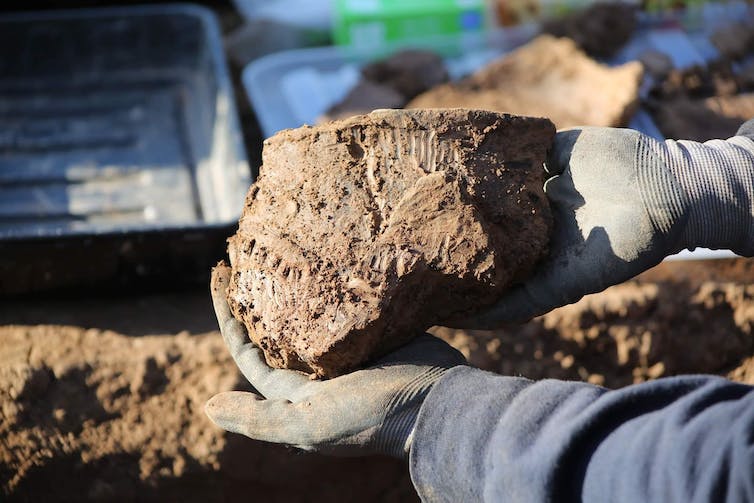
Was this clay pot made by bronze age travellers?
Vivian Paul Thomas, Author supplied
No different bronze age settlement like this has been found in south Wales and now we have loads of questions in consequence, which, to this point, stay unanswered.
One factor we do know is that none of those discoveries might have been made with out the fervour and participation of native folks. Almost 400 youngsters have been concerned within the dig in addition to tons of of volunteers, who gave greater than 3,000 hours of their time to assist out.
What units CAER aside from many different group archaeology tasks is that the folks have remained concerned within the work manner past simply the excavation course of. Children and adults have sieved, cleaned and analysed our finds and proceed to analysis the bronze age of their spare time.
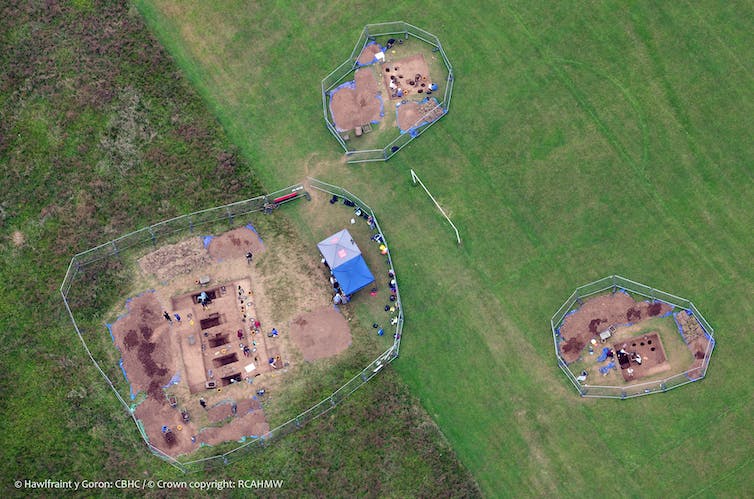
The archaeological dig in Trelai Park happened on the soccer pitch.
Crown Copyright RCAHMW
Buoyed by such enthusiasm, we might be again digging in Trelai Park this summer time, the place as soon as once more we might be working alongside our passionate citizen archaeologist colleagues. We’re excited on the prospect of what we could uncover.
![]()
Oliver Davis receives funding from AHRC, National Lottery Heritage Fund, Arts Council Wales, Royal Archaeological Institute, Prehistoric Society, Cambrian Archaeological Association.
